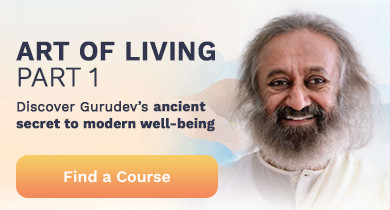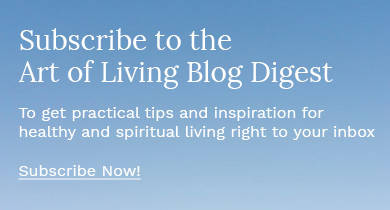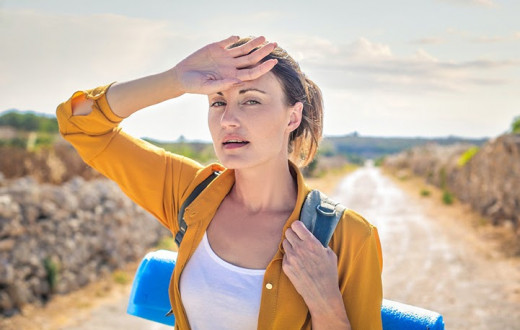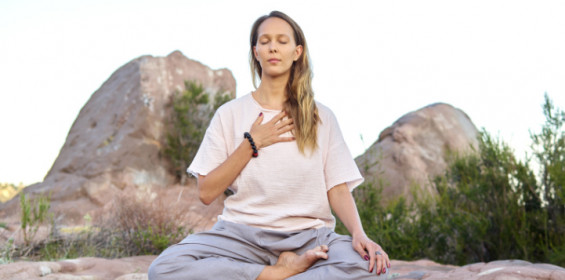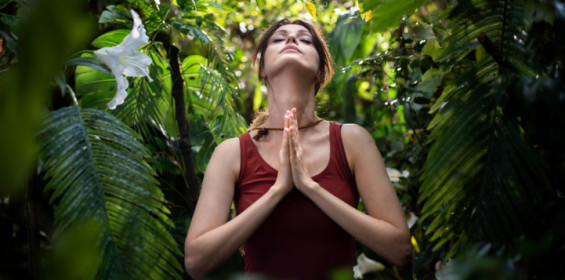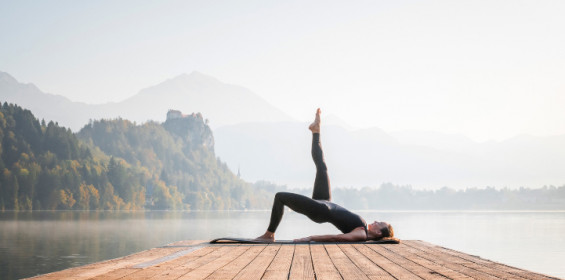By Denise Everheart
With the global pandemic nearing the end many are feeling anxious. Read on to learn a three-pronged approach for those struggling with anxiety.
Muscle tension. Negative thoughts. Nausea. Trouble breathing. Fear. Overwhelming anxiety. These are just some of the symptoms you may have experienced with respect to the pandemic and even the likelihood of returning to more normal human interactions post-pandemic.
If the thought of being around more and more people has you feeling anxious, you’re not alone! After nearly the whole planet self-isolating for more than a year, we’ve become accustomed to a different kind of living dynamic. Other than Zoom calls and perhaps a quick run to the grocery store, many of us haven’t had much human interaction. And whether we enjoyed the experience of being at home or not, suddenly being able to go to more places and see more people is all surprisingly STRESSFUL. Social anxiety is all too real for more people, now more than ever!
Why is it so stressful to even think about being around more people? For one thing, we may have had more quiet in our lives. We might also feel anxious about removing our mask or being around someone not wearing a mask. And you might wonder if your comfort zone is the same as the person you are now face-to-face with? Will you be judged for your reluctance to embrace getting back to normal? Handshakes or hugs or neither? So many questions stirring around in our minds are sure to bring up some anxiousness.
What was a common everyday experience of human contact is now something new and somewhat strange. With less happening in our lives, making small talk could be awkward or seem very much important. Being indoors and without a mask, standing or sitting next to someone might simply be too much to handle. I am here to help you navigate this potential minefield of social anxiety and learn ways to better take care of your mental health.
Step by step
The first way you can begin reducing your anxiety level is to take it slow and easy. Give yourself small goals, or baby steps, towards spending more time with maybe one or two trusted friends or family members. You might also want to meet up outdoors where there is a bigger sense of space rather than a smaller indoor space that could end up adding to your anxious feelings. And set a time limit that feels comfortable to you. Anything you can do to avoid a panic attack is a good thing! ; )
Pace yourself
There might be a sense of urgency to see everyone who you haven’t been able to see throughout the quarantine, as well as a deep desire to reconnect with so many loved ones. But it doesn’t have to be an all at once or one after the other scenario. Pace yourself. It’s ok to want to take some time in reconnecting. The more you allow yourself a comfortable pace, the fewer stress, and anxiety symptoms you will be feeling.
Setting boundaries
It’s ok to say, “Hey, I’m not ready to hug people yet.” Or, “I feel better keeping my mask on.” Speaking up about social situations and setting boundaries will only help reduce any fear you might have. Don’t worry about what people will think. Let them think whatever they want. Remind yourself that you are doing what you need to do to take care of yourself and avoid an anxiety attack.
Take a break
Taking things one step at a time, pacing yourself, and setting boundaries are a great start to taking better care of your mental health in this transitional time! To continue your journey towards more calm try using specific tools for self-care, like yoga, breathwork, and meditation. Here are some things you might like to try:
Take a yoga class from home. One of the silver linings that came out of more people staying at home was virtually everything being available online. I recommend The Art of Living Yoga Studio. There’s even a Yoga Nidra class which is especially helpful for those with an anxiety problem.
One of the best ways to take a break is to take a breath! Breathwork gives you the tools to harness the power of your breath for increased calm in the face of any stressful situation. Here are two short YouTube videos demonstrating the easy breathing techniques, Humming Bee Breath and Alternate Nostril Breathing- both are helpful with generalized anxiety.
A long-term solution is to meditate regularly either using a mantra-based meditation technique like Sahaj Samadhi, or a breath-based meditation technique like SKY Breath Meditation. Why these types of meditation as opposed to mindfulness or mental focus techniques? They are time-tested (thousands of years) and science-backed!
For more on this three-pronged approach, you can read these articles:
Yoga for Anxiety: The Top 10 Tips to Deal with Stress and Panic
Anxiety Solutions Using the 5 Senses Plus Breathwork: Calm Is Yours
What is Meditation? 12 Ways It Can Help You and How To Begin Today
Continue the good habits of quarantine times
One of the more common reasons we are having “re-entry anxiety” is that we do not want to give up the good things about staying at home. We have had more time to decompress, read, take a walk, learn new skills, try new recipes, and the list goes on and on! The good news is we can make a plan to incorporate all of these good habits into our “new” normal daily life. Just like you use a planner or calendar for work or school, map out your priorities with all your favorite activities from quarantine and schedule them! Having a routine will not only make sure you get to do the things that matter most, struggling with anxiety will become a thing of the past.
Insurance against future anxiety
Because stress, anxiety, trauma, and fear do not turn off by themselves, we need robust ways to deal with them. We do not want the mental and physical symptoms of normal anxiety to become severe anxiety and even depression. SKY Breath Meditation is the technique that has helped millions gain better mental health as well as physical health improvements. Here’s a brief list of what you can gain from a SKY practice:
Significant decrease in clinical and non-clinical anxiety
78% reduction in serum cortisol levels (stress hormone)
Healthier blood pressure
Significant decrease in clinical and non-clinical depression
Reduces post traumatic stress disorder
Improved respiratory function
33%increase in immune cell count
Reduced addictive behaviors
Enhanced deep sleep
It’s easy to think, “Where have you been my whole life, SKY Breath Meditation!?!” LOL! I had the good fortune of learning SKY back in 1995 and it has made a huge difference in my life. My mental wellbeing has improved in leaps and bounds! If any anxiety comes up, SKY effortlessly and gently sweeps it away. I highly recommend learning SKY Breath Meditation!
If you would like to learn more about SKY, please attend a free introductory session, online and from the comfort of your home. A certified instructor will teach you a breathing technique, lead a relaxing guided meditation, as well as answer any questions you might have. Don’t wait to get the anxiety relief you need, choose a day and time today!
If you suffer from excessive anxiety or other anxiety disorder, please seek treatment with a clinical psychologist or other healthcare professional. There is no shame in seeking help for anxiety or any other mental health condition. You deserve to enjoy a peaceful, happy life free of anxiety symptoms! All the best to you!
Denise Everheart is a freelance writer, life-long meditator, SKY Breath Meditation instructor, party planner, veg chef, and recipe designer. Follow her @everheartstudio4meditation and @celeplateyourlife on Instagram.
Disclaimer: This content on the Art of Living Blog is not intended to be a substitute for professional medical advice, diagnosis, or treatment. Always seek the advice of your physician or other qualified health providers with any questions you may have regarding a medical condition, Any links to third-party websites are provided as a convenience only and the Art of Living Blog is not responsible for their content.
